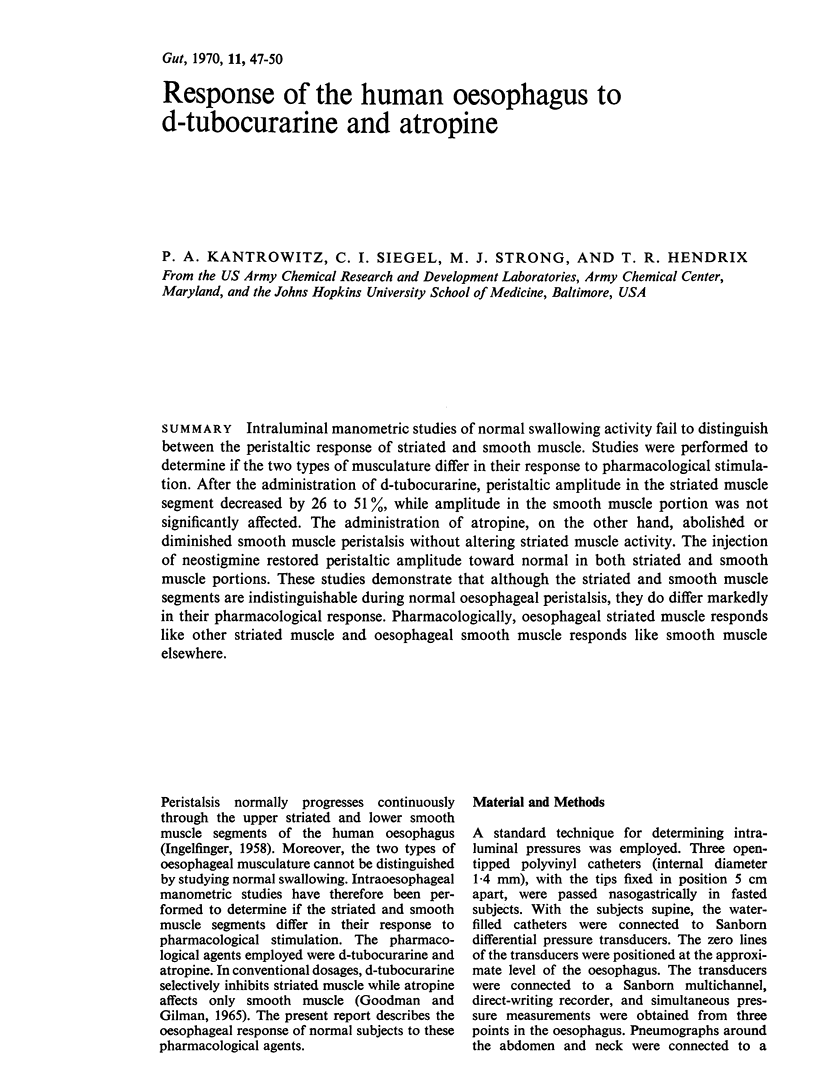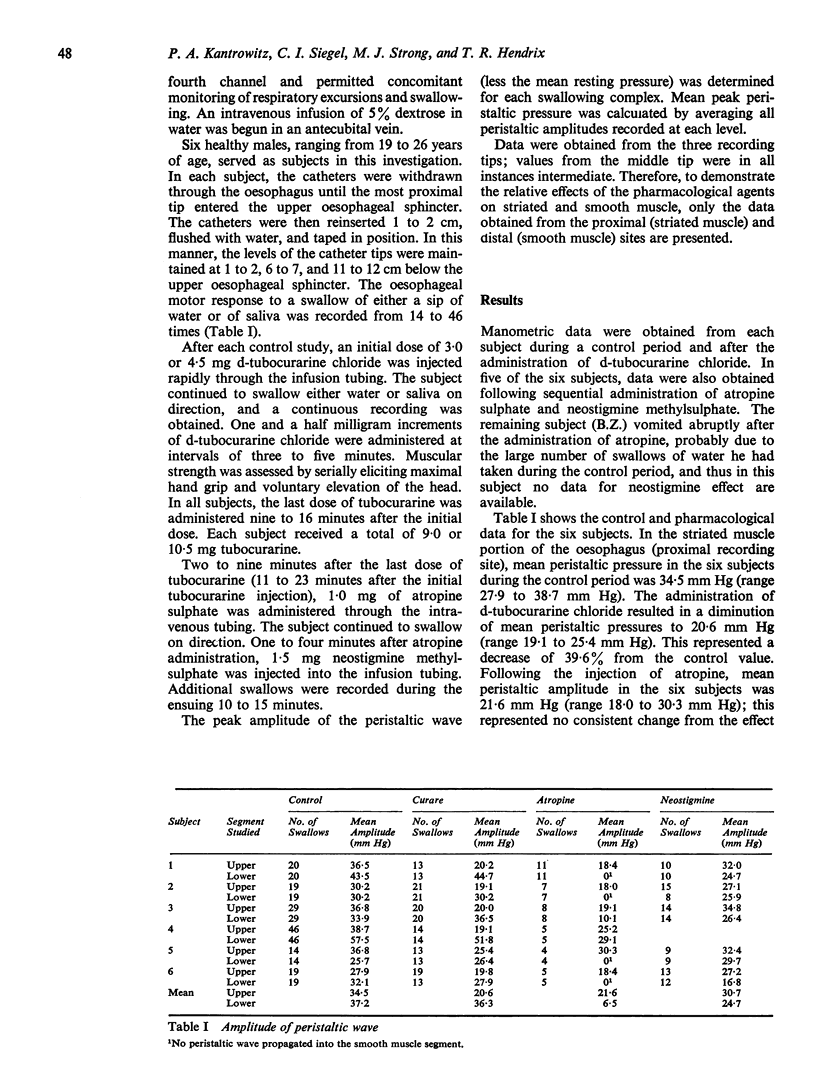Abstract
Intraluminal manometric studies of normal swallowing activity fail to distinguish between the peristaltic response of striated and smooth muscle. Studies were performed to determine if the two types of musculature differ in their response to pharmacological stimulation. After the administration of d-tubocurarine, peristaltic amplitude in the striated muscle segment decreased by 26 to 51%, while amplitude in the smooth muscle portion was not significantly affected. The administration of atropine, on the other hand, abolished or diminished smooth muscle peristalsis without altering striated muscle activity. The injection of neostigmine restored peristaltic amplitude toward normal in both striated and smooth muscle portions. These studies demonstrate that although the striated and smooth muscle segments are indistinguishable during normal oesophageal peristalsis, they do differ markedly in their pharmacological response. Pharmacologically, oesophageal striated muscle responds like other striated muscle and oesophageal smooth muscle responds like smooth muscle elsewhere.
Full text
PDF



Selected References
These references are in PubMed. This may not be the complete list of references from this article.
- INGELFINGER F. J. Esophageal motility. Physiol Rev. 1958 Oct;38(4):533–584. doi: 10.1152/physrev.1958.38.4.533. [DOI] [PubMed] [Google Scholar]


